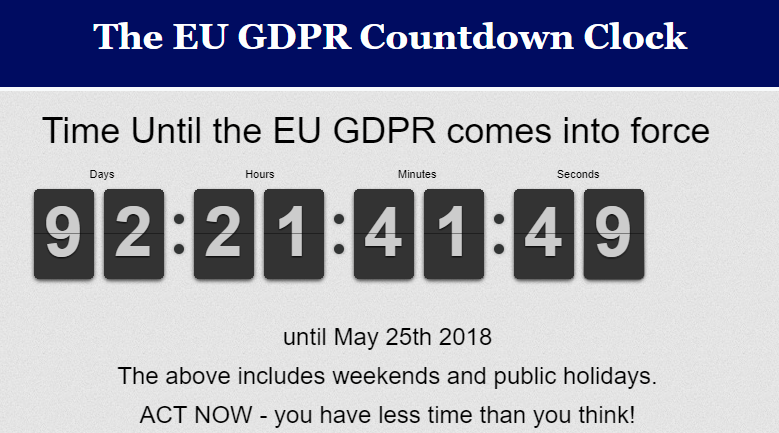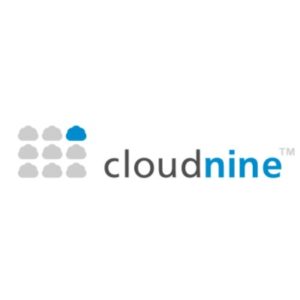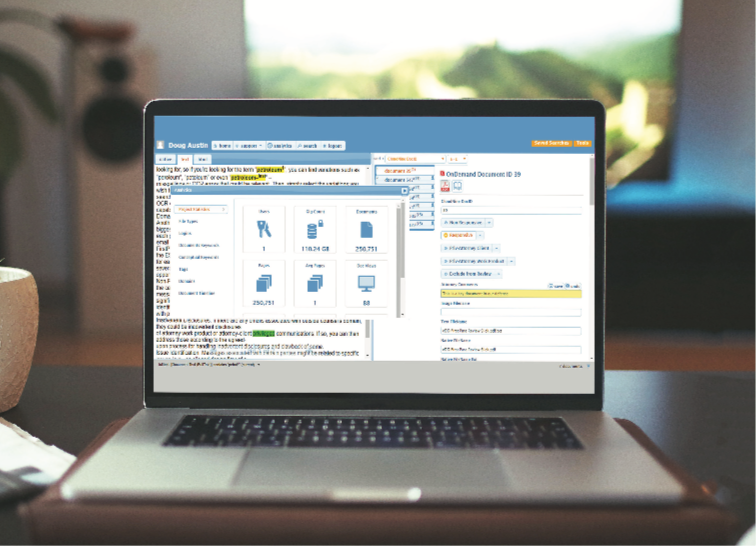Electronic Discovery
No Sanctions for Failing to Preserve Cell Phone Records and Call Logs: eDiscovery Case Law
In Dotson, et al. v. Edmonson, et. al., No. 16-15371 (E.D. La. Jan. 22, 2018), Louisiana District Judge Susie Morgan denied the plaintiff’s motion in limine seeking sanctions for spoliation of evidence, finding that the plaintiff had “not met his burden of establishing that the Trooper Defendants had a duty to preserve” cell phone records and call logs from the evening of October 7, 2015 from Louisiana State Police (LSP) issued cell phones that were used that night by LSP officers during an undercover operation, or that their destruction of the evidence was intentional.
Case Background
In this case related to a civil suit over a drug bust involving the plaintiff, the defendants provided interrogatory responses deposition testimony which indicated that LSP troopers relied on their LSP-issued (or LSP-funded) cell phones to communicate during the course of operations in general, and specifically on the night of October 7, 2015. The plaintiff asserted that this “establishes the existence of electronically stored information such as call logs and text messages on those cell phones” and argued that, as early as October 7, 2016, when the defendants were named in an article on nola.com and the case was filed, the defendants and the LSP were on notice that litigation was pending, and thus should have known that any ESI relating to the investigatory stop and arrest of the plaintiff was required to be preserved. Nonetheless, Defendants traded in their cell phones one month after Plaintiff filed his suit.
The plaintiff issued multiple discovery requests and subpoenas, and filed several motions to compel in efforts to obtain the call logs and text messages and develop an understanding of the officers’ movements and observations on the night of the arrest to no avail and claimed the loss of these records prejudiced his case, because the movements and communications among these officers were crucial to establishing whether reasonable suspicion existed to stop the plaintiff. In response, the defendants argued that the plaintiff’s proposed remedy unfairly targeted Defendant Bodet (one of the Trooper Defendants), “as the Fifth Circuit makes clear that sanctions for spoliation should be taken against the alleged spoliator” and argued there is no evidence to suggest that Bodet acted in bad faith, or that he should have known of a need to preserve any electronically stored information on his phone.
Judge’s Ruling
Citing Rule 37(e), Judge Morgan stated: “The Plaintiff has not met his burden of establishing that the Trooper Defendants had a duty to preserve the electronically stored information related to the cell phone records from October 7, 2015 at the time the information was destroyed or that their destruction of the evidence was intentional. The Court will not provide the requested instruction to the jury based on an adverse inference.”
However, Judge Morgan excluded the Trooper Defendants from speculating at trial that they “may have” called a particular trooper based on deposition testimony to the contrary. She also stated that “the Court’s ruling does not preclude the Plaintiff from eliciting testimony regarding the loss of the cell phone records and text messages”, nor did it prohibit questioning “regarding the cell phone record preservation policies of the Louisiana State Police, as such testimony is relevant and its relevance is not outweighed by the risk of undue prejudice.”
So, what do you think? Should the defendants have received some sanctions? Please share any comments you might have or if you’d like to know more about a particular topic.

Case opinion link courtesy of eDiscovery Assistant.
Sponsor: This blog is sponsored by CloudNine, which is a data and legal discovery technology company with proven expertise in simplifying and automating the discovery of data for audits, investigations, and litigation. Used by legal and business customers worldwide including more than 50 of the top 250 Am Law firms and many of the world’s leading corporations, CloudNine’s eDiscovery automation software and services help customers gain insight and intelligence on electronic data.
Disclaimer: The views represented herein are exclusively the views of the author, and do not necessarily represent the views held by CloudNine. eDiscovery Daily is made available by CloudNine solely for educational purposes to provide general information about general eDiscovery principles and not to provide specific legal advice applicable to any particular circumstance. eDiscovery Daily should not be used as a substitute for competent legal advice from a lawyer you have retained and who has agreed to represent you.
Don’t Panic, but the Countdown is on and GDPR is Coming!: Data Privacy Trends
I have a “panic button” on my desk. Are you panicking about the upcoming Europe General Data Protection Regulation (GDPR) yet? If so, see below.
I stumbled across an EU GDPR countdown clock yesterday. As of when I’m writing this, the clock says there are 92 days, 22 hours, 11 minutes and 08 seconds “Until the EU GDPR comes into force” (on May 25th). So, time is ticking!
Are you ready? Gartner predicts that on May 25th, more than half of companies affected by the GDPR will not comply fully with its requirements.
If you’re afraid you may be one of those companies, or not even sure whether or not GDPR applies to you, today at noon CST (1:00pm EST, 10:00am PST), CloudNine will conduct the webcast eDiscovery and the GDPR: Ready or Not, Here it Comes! In this one-hour webcast that’s CLE-approved in selected states, we will discuss how data privacy requirements have evolved over time, the parameters associated with the GDPR, what they mean to your organization and what steps your organization needs to take to ensure compliance with the GDPR.
Once again, I’ll be presenting the webcast, along with Tom O’Connor, who recently wrote an article about GDPR that we covered as a four part blog series. It’s not too late to register for it, if you want to attend, click here. Even if you can’t make it today, you can still go ahead and register to get a link to the slides and to the recording of the webcast (if you want to check it out later).
Oh, and I really do have a “panic button” from Hoops & Yoyo™. I keep it on my desk at work and it comes in handy at times to relieve stress. If you want to see what it looks like and sounds like, click here.
So, what do you think? Are you ready for GDPR? If not, don’t panic! Please share any comments you might have or if you’d like to know more about a particular topic.
*Oh, now we’re down to 92 days, 21 hours, 41 minutes and 49 seconds! Just in the time it’s taken me to write this blog post! :o)

Sponsor: This blog is sponsored by CloudNine, which is a data and legal discovery technology company with proven expertise in simplifying and automating the discovery of data for audits, investigations, and litigation. Used by legal and business customers worldwide including more than 50 of the top 250 Am Law firms and many of the world’s leading corporations, CloudNine’s eDiscovery automation software and services help customers gain insight and intelligence on electronic data.
Disclaimer: The views represented herein are exclusively the views of the author, and do not necessarily represent the views held by CloudNine. eDiscovery Daily is made available by CloudNine solely for educational purposes to provide general information about general eDiscovery principles and not to provide specific legal advice applicable to any particular circumstance. eDiscovery Daily should not be used as a substitute for competent legal advice from a lawyer you have retained and who has agreed to represent you.
Only 53 Percent of Surveyed Security Officers Are Confident in Security of Data by Third Parties: Cybersecurity Trends
A recently issued report provides an interesting look at how Chief Information Security Officers (CISOs) and others responsible for security are addressing the challenges in today’s cybersecurity climate.
The report (The Shifting Cybersecurity Landscape: How CISOs and Security Leaders Are Managing Evolving Global Risks to Safeguard Data, by Ankura and Ari Kaplan Advisors), issued earlier this month, explores the roles of CISOs (chief information security officers), the adoption of cloud technology and how entities are auditing their vendors. Ankura partnered with Ari Kaplan Advisors and interviewed 30 industry leaders in August 2017, to detect how corporations are adapting to today’s evolving threat landscape. Most of these were large organizations (70 percent with over $1 billion in annual revenue, 80 percent with over 5,000 employees).
Interesting findings include:
- 97 percent of the respondents indicated they were evaluating security practices of their vendors, partners, law firms, and third parties that interact with their data. For 17 percent of them, regulatory requirements have driven that effort.
- However, only 53 percent said they were confident in the security of their data being managed by vendors, partners, and other third parties.
- 57 percent of the participants noted that their organizations are periodically involved in litigation or investigations that require them to transfer information to law firms and eDiscovery vendors, among others. 27 percent frequently need to do so.
- 87 percent of respondents were using third-party cloud providers to “host non-critical information” to save money and streamline business processes. 17 percent of the respondents noted that Office 365 is a common impetus for moving to the cloud.
- 77 percent of respondents advised that the scope of their managed security services includes incident response. And, for 63 percent, that support included onsite response. However, only 37 percent were confident that their managed services provider would provide a legally defensible investigation if they were the victim of a breach or other cyber incident.
- 80 percent of respondents reported having a Bring Your Own Device (BYOD) plan, though some noted that their plan is to prohibit personal devices. 63 percent believe that those gadgets contain company sensitive information.
GDPR is one significant regulatory requirement affecting security considerations, with one respondent stating that “GDPR will influence the way many companies appraise their partners, given the expansion of responsibilities for both data controllers and processors under the new privacy framework set for implementation in 2018.” Good thing we have a webcast on the topic tomorrow! :o)
The report, a 24 page PDF, chock full of other statistics and findings, is available here. As always, hat tip to Sharon Nelson of the Ride the Lightning blog for her coverage of the report.
So, what do you think? Do any of these numbers surprise you? Do you disagree with any of them? Please share any comments you might have or if you’d like to know more about a particular topic.

Sponsor: This blog is sponsored by CloudNine, which is a data and legal discovery technology company with proven expertise in simplifying and automating the discovery of data for audits, investigations, and litigation. Used by legal and business customers worldwide including more than 50 of the top 250 Am Law firms and many of the world’s leading corporations, CloudNine’s eDiscovery automation software and services help customers gain insight and intelligence on electronic data.
Disclaimer: The views represented herein are exclusively the views of the author, and do not necessarily represent the views held by CloudNine. eDiscovery Daily is made available by CloudNine solely for educational purposes to provide general information about general eDiscovery principles and not to provide specific legal advice applicable to any particular circumstance. eDiscovery Daily should not be used as a substitute for competent legal advice from a lawyer you have retained and who has agreed to represent you.
eDiscovery Expert Brett Burney Reviews CloudNine Platform
CloudNine – Competitively Priced Cloud-Based Platform for Data Processing, Review, and Production Supported by a Full Professional Services Portfolio
An eDiscovery Platform Review by Brett Burney*
Backed by a strong history of litigation services, the CloudNine platform is an easy-to-use choice for processing, reviewing, and producing the electronic data you collect from your client or an opposing party. CloudNine has developed a “4S” focus on speed, simplicity, security, and services.
“CloudNine platform is an easy-to-use choice for processing, reviewing, and producing the electronic data you collect from your client or an opposing party.”
Uploading & Processing Data
Although the entire CloudNine platform is accessible via a web browser, you’ll need to download the “Discovery Client” software in order to upload data to the platform. The software is Windows-only, but Mac users have successfully used the software through Windows virtualization software (e.g. Parallels www. parallels.com).
The software download feels like an unnecessary step – other platforms just let you upload files directly through the browser. But the extra task actually provides an ingenious opportunity to cull out extraneous digital junk that you don’t even need or want uploaded into the review database. If you don’t take advantage of this, you’re wasting time and racking up unnecessary expenses. Plus, the desktop application offers more robust features and an upload won’t get interrupted if you happen to close your web browser tab.
How do you receive data from clients? Do they send USB thumb drives or external hard drives which they’ve stuffed full with all the data they think you’ll need? Make a working copy of the files on to your computer or server, and then launch the CloudNine Discovery Client software and point it to that folder. The software scans the folder, and you get to put checkmarks on only the files that you need. You should UN-check any computer system files, or maybe you don’t want to upload their iTunes music collection, or you don’t want to look at their sales spreadsheets. You can always go back and upload those files later if you discover you need them.
The Discovery Client software uploads your selected data to CloudNine and starts the data processing stage where metadata is extracted, text files are created, hash files are generated, and HTML renders are completed. CloudNine also generates an EDA report (early data assessment) so you see how much data you’ve loaded, how many messages, families, file types, etc. that you’ll be reviewing.
Analytics & Keywords
But there’s still some investigative work you can do on your documents before you just dive into the first document in the list. Open the Analytics panel in CloudNine and click the “Project Statistics” to get a big picture of the size of the data you’re looking at, the number of pages/documents, average pages per document, etc.
Next you can look at the “Document Keywords” listing out all the occurrences of each word found in your files. This could be a little overwhelming, but handy info if there’s a word or phrase on which your case hinges, or you simply just want to see the frequency of certain words.
CloudNine also presents you with a collection of “Conceptual Keywords” that gives you a sense of the major themes detected in the documents and files. If nothing else, this is a good jumping-off place to determine if these files have the topics you’re targeting.
The Analytics box also reveals all the domains pulled from the emails (EML, MSG, or PST files) that you’ve uploaded.
All of these facets of your data collection can be accessed in the “Filtering” section of CloudNine so you can more precisely cull out certain documents or files that you don’t need to see initially. For example, you can filter out any emails with domains from @ espn.com or @nytimes.com since sports scores and news headlines are probably not going to be relevant to your matter. You can also filter out by file type, or get rid of any duplicate files. You’re not deleting any of these files, you’re just [digitally] setting them aside so you can focus on what’s most important first.
“CloudNine also presents you with a collection of “Conceptual Keywords” that gives you a sense of the major themes detected in the documents and files. If nothing else, this is a good jumping-off place to determine if these files have the topics you’re targeting.”
Searching
Searching in CloudNine is easy, whether you want to search the content of every single file, or you want to narrow down your search to a specific field – such as only searching the From or To or CC lines of an email message. When you search the full text of your files, the words are highlighted in the Text and HTML views so they jump right out.
Click “Recent Searches” to view your search history, or save a search to run it again later.
Viewing Documents
CloudNine has a unique “Vertical Document List View” that shows the document on the left side of your screen, a column in the middle with a file list, and a panel on the right showing available tags and all the metadata associated with the selected file. This is how most folks will use CloudNine once you’re ready to read through documents.
CloudNine also offers a “Native Tree View” that shows the folders of how the original documents were stored and organized. For example, if your client just copied folders from their server and sent that to you, this Native Tree View will show you all of the folders and sub-folders mirroring how your client stored their files. If your client sent a PST file, the Native Tree View shows you the same folders and sub-folders that they see in their Microsoft Outlook inbox. This view is fantastic because you get to see exactly how your client stored their files, which is helpful when you’re conversing with your client on where and how they stored certain files.
If you have a dual-monitor, you’ll appreciate the “Table View” where one monitor can show you the document while the other monitor displays all the document’s metadata.
Document Exports & Productions
There are a host of options for exporting and producing files out of CloudNine once they’ve all been reviewed and tagged for relevancy and privilege. An excellent export wizard walks you through the process of selecting what you need to export: native files, images, OCR, load files, etc. You also have options for Bates stamping files and otherwise labeling them.
You’ll receive an email once the production is complete so that you can download it off the system and distribute it to the waiting parties.
Pricing
CloudNine offers some of the most competitive pricing in the industry starting at $35 per GB per month. That can go down to $12 per GB per month if you have the volume to support that pricing structure. Additional services will add a few dollars to the price.
Always check CloudNine’s website and contact them for up to date info.
Who Is CloudNine?
CloudNine has been around since 2002 headquartered in Houston, Texas. The company started out primarily as a litigation services company, but their main focus today is the CloudNine, cloud-based platform for data processing, review, and production. But they still remain a full-service shop to support their platform and assist you with any of your eDiscovery related needs.
Why You Should Consider CloudNine…
- An included Litigation Hold tool lets you email notifications and track acknowledgments – much better than manually tracking via Outlook.
- You can sign up for CloudNine for free without a credit card and load as much data as you want for a 30-day trial. It’s an excellent way to test out the system.
- CloudNine offers a protected cloud security infrastructure vs. a general public cloud which provides CloudNine more control and access to their servers depending on the needs of clients.
- If you use Relativity, also check out their Outpost for Relativity service that can streamline the ingestion of data into Relativity saving you buckets of time.
“There are a host of options for exporting and producing files out of CloudNine once they’ve all been reviewed and tagged for relevancy and privilege. An excellent export wizard walks you through the process of selecting what you need to export: native files, images, OCR, load files, etc.”
Try Out CloudNine For Yourself!
Click here to sign up for a 30 day no-risk free trial of CloudNine. And, for any additional information regarding CloudNine products, you can contact Doug Austin, CloudNine VP of Products and Professional Services at daustin@cloudnine.com.

No Sanctions for Failing to Preserve Videos and Photos of Prisoner Accident: eDiscovery Case Law
In Hernandez v. Tulare Cnty. Correction Center, et al., No. 1:16-cv-00413-EPG (PC) (E.D. Cal. Feb. 8, 2018), the California Magistrate Judge denied the plaintiff’s motion for sanctions, ruling that the defendants did not act with the intent to deprive there was no prejudice to the plaintiff from loss of videos and photos of an accident suffered by the plaintiff, a state prisoner at the defendant’s correctional facility.
Case Background
In this case, the plaintiff tripped and fell when going through an x-ray scanning machine while shackled, suffering injuries – as a result, he filed a personal injury lawsuit against the defendants. In August 2017, the plaintiff filed a motion to compel claiming that Tulare County failed to preserve relevant videos as well as photos (stored on a memory card) of the accident. In a discovery hearing held in September 2017, defendant’s counsel confirmed that relevant ESI had, in fact, been mistakenly deleted by Tulare County officials and could not be replaced. The motion to compel was denied because there was nothing to produce and the plaintiff was instructed on the procedure to file a motion for sanctions pursuant to Rule 37(e) of the Federal Rules of Civil Procedure. He filed the motion for sanctions a few days later, requesting monetary sanctions and entry of default judgment based upon intentional deprivation of relevant evidence and serious prejudice suffered to his case that cannot be cured. Defendant Tulare County filed a response in opposition arguing that the loss of the ESI was inadvertent and did not prejudice the plaintiff.
Judge’s Ruling
Noting that Subdivision (e)(1) of Fed. R. Civ. P. 37(e) applies only “upon finding prejudice to another party from loss of the information” and that Subdivision (e)(2) applies “only upon finding that the party acted with the intent to deprive another party of the information’s use in the litigation”, the court proceeded to consider those two factors with respect to the plaintiff’s motion.
With regard to the intent to deprive consideration, the Court stated: “While the Court is troubled by the the failure to preserve the relevant video, there is no indication from the evidence in the record that Tulare County acted with intent to deprive Plaintiff of use of the video in this case. Upon consideration of the evidence in the record, it appears that this failure was a result of Tulare County either being misinformed about the relevant scope of this litigation or that the staff responsible for the preservation were poorly trained. However, the record does not contain any evidence suggesting that the failure to preserve the video was a result of bad faith or intent to deprive.”
With regard to the claim of prejudice suffered, the Court noted that “Tulare County does not dispute that: 1) Plaintiff was in shackles and other detainees were not; 2) Plaintiff tripped and fell when stepping onto the platform of the body scanner; or 3) others assisted Plaintiff to his feet after he fell.” The Court also noted that “the video surveillance in question does not capture sound so the footage would not have been helpful regarding Plaintiff’s allegations that he informed correctional staff about his disability and the information was ignored”, that “Tulare County has produced relevant documents in this case, including photos of Plaintiff’s injuries” and “Plaintiff has also located eye-witnesses of the April 21, 2015 incident, who have reportedly agreed to provide testimony in support of his case.” As a result, the Court ruled that the plaintiff was not prejudiced by loss of the information and denied the motion for sanctions.
So, what do you think? Should the defendants have received at least some level of sanctions? Please share any comments you might have or if you’d like to know more about a particular topic.
February 19 has always been an important day to me, as this was my dad’s birthday (he would have been 89 today) and it’s my wife Paige’s birthday now! Happy birthday, honey!

Case opinion link courtesy of eDiscovery Assistant.
Sponsor: This blog is sponsored by CloudNine, which is a data and legal discovery technology company with proven expertise in simplifying and automating the discovery of data for audits, investigations, and litigation. Used by legal and business customers worldwide including more than 50 of the top 250 Am Law firms and many of the world’s leading corporations, CloudNine’s eDiscovery automation software and services help customers gain insight and intelligence on electronic data.
Disclaimer: The views represented herein are exclusively the views of the author, and do not necessarily represent the views held by CloudNine. eDiscovery Daily is made available by CloudNine solely for educational purposes to provide general information about general eDiscovery principles and not to provide specific legal advice applicable to any particular circumstance. eDiscovery Daily should not be used as a substitute for competent legal advice from a lawyer you have retained and who has agreed to represent you.
For a More Complete and Accurate Review, Be Persistent: eDiscovery Best Practices
Manual document review can be prone to error. It’s easy to miss highly relevant documents or privileged documents if you fail to spot the terms that cause them to be identified as highly relevant documents or privileged. To help spot those terms, you have to be “persistent”. And, there’s a new review of CloudNine that you might want to check out!
By “persistent”, I’m talking about persistent highlighting, which is the topic for this week’s eDiscovery Tech Tip of the Week (see what I did there?). :o) Let’s face it: Failing to spot highly relevant, hot or privilege terms during document review can lead to important documents being missed or inadvertent disclosure of privileged information. Persistent highlighting enables these important terms to be always highlighted – regardless of search criteria – enabling them to be more easily spotted during review, which improves the quality of the review process.
When a review platform offers persistent highlighting, there is typically an area where you can identify the terms that you want to always be highlighted. Once you build that list, those terms will then always be highlighted anytime you review a document containing them, generally in a color different than the highlight color used for highlighting retrieved search terms.
Persistent highlighting can help improve the accuracy and completeness of your review and can help reduce potential inadvertent disclosures of privileged information. To see an example of how Persistent Highlighting is conducted using our CloudNine platform, click here (requires BrightTalk account, which is free).
———————————————
When evaluating an eDiscovery platform, it’s important to check out reviews of the platform so that you can gain from other perspectives on what those people like about a platform and where there are opportunities for improvement. As we discussed previously, sites like Capterra, G2 Crowd and Gartner Peer Insights enable you to learn about actual client experiences with the platform. And, earlier this month, we covered this free Buyer’s Guide, which reviews several eDiscovery solutions, including CloudNine, in a variety of product categories.
Now, here’s a new review of our CloudNine platform by industry thought leader Tom O’Connor. As you may know, Tom is a long time consultant in the industry and also does some work with CloudNine, as well as participating on our webcasts with me (which has been great fun!) and writing articles. Now, Tom has written a review of our platform that covers the full range of features, while also identifying some features he would like to see added. So, I guess I can’t retire yet? Thanks a lot, Tom! ;o) Anyway, here is a link to Tom’s review of CloudNine for your consideration.
So, what do you think? Do you use persistent highlighting in your review processes? Please share any comments you might have or if you’d like to know more about a particular topic.

Sponsor: This blog is sponsored by CloudNine, which is a data and legal discovery technology company with proven expertise in simplifying and automating the discovery of data for audits, investigations, and litigation. Used by legal and business customers worldwide including more than 50 of the top 250 Am Law firms and many of the world’s leading corporations, CloudNine’s eDiscovery automation software and services help customers gain insight and intelligence on electronic data.
Disclaimer: The views represented herein are exclusively the views of the author, and do not necessarily represent the views held by CloudNine. eDiscovery Daily is made available by CloudNine solely for educational purposes to provide general information about general eDiscovery principles and not to provide specific legal advice applicable to any particular circumstance. eDiscovery Daily should not be used as a substitute for competent legal advice from a lawyer you have retained and who has agreed to represent you.
“Master” the Love – Today and on February 28th: eDiscovery Trends
Happy Valentine’s Day! Hope you’re all feeling the love today! Speaking of feeling the love, we’re only two weeks away from the first event of the year at The Master’s Conference in Dallas!
The Master’s Conference brings together leading experts and professionals from law firms, corporations and the bench to develop strategies, practices and resources for managing eDiscovery and the information life cycle. This year’s Dallas event covers topics ranging from InfoGov to investigations to machine learning to data discovery to cybersecurity and even blockchain(!), among other things. Here’s a link to the full agenda.
The event will be held on Wednesday, February 28th at the offices of Thompson & Knight LLP, 1722 Routh St Suite 1500, Dallas, TX 75201. Registration begins at 8am, with sessions starting right after that, at 8:45am.
CloudNine will be sponsoring the session Investigate This! eDiscovery Is Not Just for Litigation Anymore at 8:45pm that day. I will be participating in a panel discussion that is moderated by Kevin Clark, Litigation Support Manager at Thompson & Knight (and gracious host for the event) and includes James Lary, Forensic Technology & Discovery Services Manager with Ernst & Young, Jeff Teso, Managing Director with Alvarez & Marsal and Dave Rogers, Director at PricewaterhouseCoopers and Adjunct Professor at SMU Cox School of Business. We’ll be sharing experiences and providing examples of the use of eDiscovery technology and best practices in support of investigations. eDiscovery is not just for litigation anymore!
Click here to register for the conference. If you do so today, you can save up to $200 to attend! Hurry!
Of course, the one I’m really feeling the love for today is my wife Paige – Happy Valentine’s Day, honey! I love you! ♥♥♥♥♥
So, what do you think? Are you going to be in the Dallas area on February 28? If so, come join us! And, as always, please share any comments you might have or if you’d like to know more about a particular topic.

Sponsor: This blog is sponsored by CloudNine, which is a data and legal discovery technology company with proven expertise in simplifying and automating the discovery of data for audits, investigations, and litigation. Used by legal and business customers worldwide including more than 50 of the top 250 Am Law firms and many of the world’s leading corporations, CloudNine’s eDiscovery automation software and services help customers gain insight and intelligence on electronic data.
Disclaimer: The views represented herein are exclusively the views of the author, and do not necessarily represent the views held by CloudNine. eDiscovery Daily is made available by CloudNine solely for educational purposes to provide general information about general eDiscovery principles and not to provide specific legal advice applicable to any particular circumstance. eDiscovery Daily should not be used as a substitute for competent legal advice from a lawyer you have retained and who has agreed to represent you.







